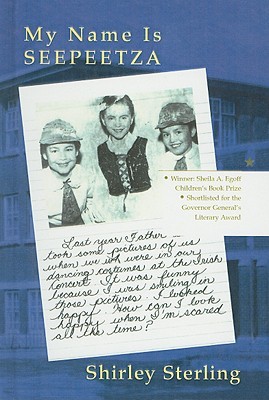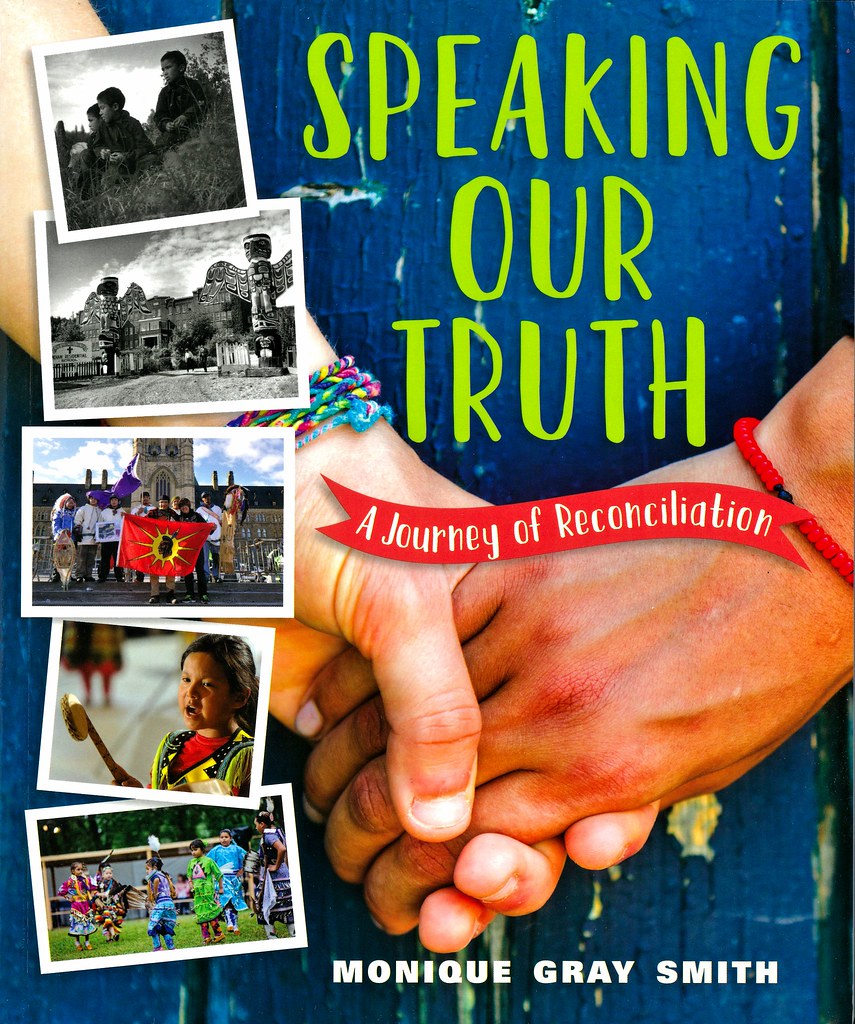Learning Commons Resources
HCOS Learning Commons Resources
You may want to watch this video by Monique Gray Smith, who shares applicable resources for different grade levels, for more on how to discern conversations.
Learning Commons | Selected Books
These books have been selected as a conversation starter on Residential Schools.
Primary (K-Grade 5):
- Shi-shi-etcoand Shin-chi’s Canoe are beautiful, award-winning picture books written by Nicola L. Campbell. They share the poignant journey of a young sister and brother as they prepare to leave their family and attend residential school.
- My Heart Fills with Happiness by Monique Gray Smith. This beautiful board book is for our littles to serve as a reminder to reflect on and cherish the moments in life that bring us joy.
- When I Was Eight by Christy Jordan-Fenton is based on the bestselling memoir Fatty Legs but for younger readers. Olemaun is eight and knows a lot of things. But she does not know how to read. Ignoring her father’s warnings, she travels far from her Arctic home to the outsiders’ school to learn. The nuns at the school call her Margaret. They cut off her long hair and force her to do menial chores, but she remains undaunted. Her tenacity draws the attention of a black-cloaked nun who tries to break her spirit at every turn. But the young girl is more determined than ever to learn to read.
- Amik Loves School: A Story of Wisdom by Katharena Vermette. Amik tells Moshoom about his wonderful school. Then his grandfather tells him about the residential school he went to, so different from Amik's school, so Amik has an idea...
- Amik Loves School is one book in The Seven Teachings Stories series. The Seven Teachings of the Anishinaabe—love, wisdom, humility, courage, respect, honesty, and truth—are revealed in these seven stories for children. Set in an urban landscape with Indigenous children as the central characters, these stories about home and family will look familiar to all young readers.
Middle School (Grade 6-9):
- When We Were Alone by David Roberston & Julie Flett - This lovely picture book captures the innocence and curiosity of a young Cree girl who notices the differences between her grandmother and herself. As she asks questions her grandmother shares her experiences in a residential school when many of her traditional cultural symbols were removed.
- Not My Girl by Christy-Jordan Fenton & Margaret-Pokiak Fenton - Margaret can’t wait to see her family, but her homecoming is unexpected. Based on the true story of Margaret Pokiak-Fenton and complemented by evocative illustrations, Not My Girl makes the original, award-winning memoir, A Stranger at Home, accessible to younger children. It is also a sequel to the picture book When I Was Eight. A poignant story of a determined young girl’s struggle to belong, it will both move and inspire readers everywhere.
- White Raven by Teoni Spathelfer & Natassia Davies - All grown up with a family of her own, Little Wolf moves from the big city to the island of her ancestors. She wants to share the beauty and mysteries of nature with her children, and she wants them to learn as much about their culture as possible. One day, Little Wolf's mother, White Raven, visits and begins to tell her grandchildren stories from her own childhood. But the stories are not happy ones. As a child, White Raven left her family to attend St. Michael's Residential School in Alert Bay, BC. While there, she experienced hunger, loneliness, shame, and isolation from her language and her culture. Even years later, as a grown woman and Elder, she has nightmares about her time at the school. But by sharing her story with Little Wolf and her grandchildren, White Raven begins to heal and brings the family closer together. Through simple, heartfelt text and vivid illustrations that combine contemporary and traditional Indigenous motifs, White Raven is an engaging teaching tool as well as a relatable narrative about the impact of intergenerational trauma on families. Based on the author's own life and her mother's residential school experience, the central message of this book is one of healing and family unity.
- Fatty Legs by Margaret-Olemaun Pokiak-Fenton - This powerful story is about an eight-year-old Inuvialuit girl standing up to the bullies while keeping her Inuit spirit intact. This takes place in a residential school in the far North.
- Dear Canada: These are my Words: The Residential School Diary of Violet Pesheens - Acclaimed author Ruby Slipperjack shares a haunting novel about a 12-year-old girl’s experience at a residential boarding school in 1966. In her notebook, she records all of her worries, heartbreaks, and memories. But maybe there is hope at the end of the tunnel!
- My Name is Seepeetza by Shirley Sterling - At six years old Seepeetza is taken from her happy family life to live as a boarder at the Kamloops Indian Residential School where she manages to find some bright spots to make her school life more bearable.
High School (Grades 9-12):
- Speaking Our Truth by Monique Gray Smith - Acclaimed Indigenous author Monique Gray Smith shares the stories of survivors and listens to allies who put the findings of the Truth and Reconciliation Commission into action.
- Truth and Reconciliation in Canadian Schools by Pamela Rose Toulouse - This book is for all teachers and families who are looking for ways to respectfully infuse residential school history, treaty education and Indigenous perspectives and contributions. The author shares a holistic approach that facilitates relationship building
- The Reason You Walk by Wab Kinew (Grade 12 ) - When his father was diagnosed with terminal cancer, Winnipeg broadcaster and musician Wab Kinew decided to spend a year reconnecting with the accomplished but distant aboriginal man who'd raised him. The Reason You Walk spans 2012, chronicling painful moments in the past and celebrating renewed hopes and dreams for the future. As Kinew revisits his childhood in Winnipeg and on a reserve in Northern Ontario, he learns more about his father's traumatic childhood at a residential school. An intriguing doubleness marks The Reason You Walk, referencing an Anishinaabe ceremonial song. Born to an Anishinaabe father and a non-native mother, he has a foot in both cultures. He is a Sundancer, an academic, a former rapper, a hereditary chief, and an urban activist. His father, Tobasonakwut, was a beloved traditional chief and a respected elected leader who engaged directly with Ottawa. Internally divided, his father embraced traditional Native religion and Catholicism, the religion shared with him at the residential school where he experienced abuse. In a grand gesture of reconciliation, Kinew's father invited the Roman Catholic bishop of Winnipeg to a Sundance ceremony where he adopted him as his brother. Kinew writes affectingly of his struggles in his twenties to find the right path, eventually giving up a self-destructive lifestyle to passionately pursue music and martial arts. The Reason You Walk is a poignant story of a towering but damaged father and son journeying to repair their family bond. Both lighthearted and solemn, Kinew gives us an inspiring vision for family and cross-cultural reconciliation and a broader conversation about the future of First Nations peoples.
- The Truth About Stories by Thomas King - Beginning with a traditional Native oral story, King weaves his way through literature, history, religion, politics, and popular culture, elucidating North America’s relationship with its Native Peoples.
- Indian Horse - Saul Indian Horse is dying. Tucked away in a hospice high above the clash and clang of a big city, he embarks on a marvellous journey of imagination back through the life he led as a northern Ojibway, with all its sorrows and joys. With compassion and insight, author Richard Wagamese traces through his fictional characters the decline of a culture and a cultural way. For Saul, taken forcibly from the land and his family when he's sent to residential school, salvation comes for a while through his incredible gifts as a hockey player. But in the harsh realities of 1960s Canada, he battles obdurate racism and the spirit-destroying effects of cultural alienation and displacement. Indian Horse unfolds against the bleak loveliness of northern Ontario, all rock, marsh, bog and cedar. Wagamese writes with a spare beauty, penetrating the heart of a remarkable Ojibway man. Called "An unforgettable work of art." in The National Post.




